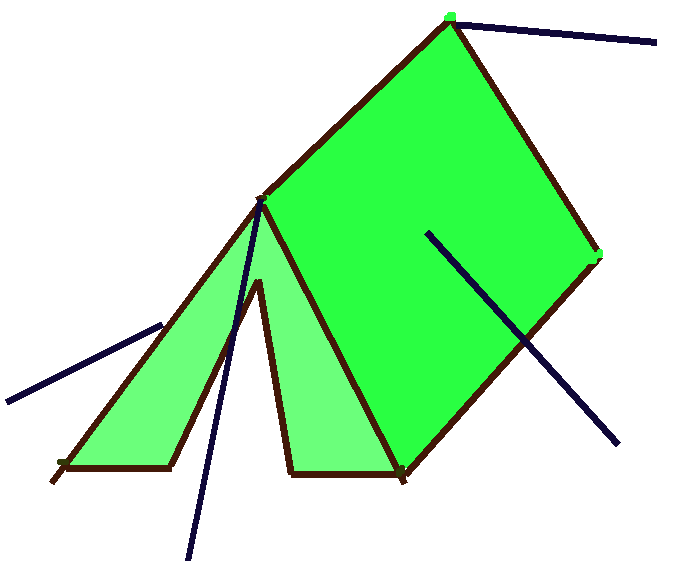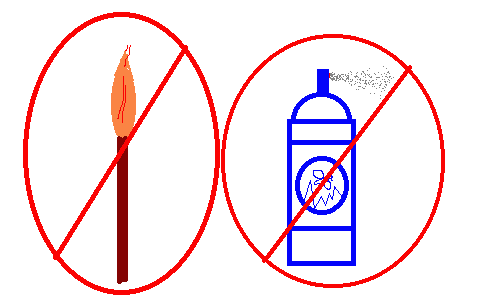Tents and their styles
Cool Places to Camp
Water and Food
Tents
Clothing
Tents
MATERIAL
 Nearly all Tents used to be made of canvas. Now most are made out of synthetic materials like nylon. Nylon has the advantage of being lightweight, and touching the sides of a nylon tent during a rainstorm won't send in a faucet of water as it will in a canvas tent. Today the larger a tent is the more practical canvas becomes. If you don't intend on carrying it very far, and the interior is large enough staying away from the sides isn't a problem, canvas might be the cheaper option. It also may wear a little longer, and may be easier to set up since you don't have to bother with a rain fly. In general, however, nylon is usually the more practical option.
Tent
Nearly all Tents used to be made of canvas. Now most are made out of synthetic materials like nylon. Nylon has the advantage of being lightweight, and touching the sides of a nylon tent during a rainstorm won't send in a faucet of water as it will in a canvas tent. Today the larger a tent is the more practical canvas becomes. If you don't intend on carrying it very far, and the interior is large enough staying away from the sides isn't a problem, canvas might be the cheaper option. It also may wear a little longer, and may be easier to set up since you don't have to bother with a rain fly. In general, however, nylon is usually the more practical option.
Tent
STYLE
 DOME
DOME
The most popular tent design today is the dome tent. They are reasonably priced, not too hard to set up, and do a decent job keeping out the rain and bugs. The older models have sleeves you have to thread the poles through wich can be frustrating and nerve racking but nicer models have clips that are a great help. Be Sure not to bend the fiberglass poles too far or they may break.
 A-FRAME
A-FRAME
The simple two poled "A frame" tent is the old tried and true favorite of days gone by. Its simple design makes it easy to repair or fashion extra pieces for in an emergency.
 WALL
WALL
The "Wall" tent is similar to the simple A frame tent but the 90 degree walls that head partway up before the angled roof comes together creates more useable space. These two styles of tents work well if set up with care. An ample amount of rope and some skill in tying a few knots like the taught line hitch and the bow line would be of help.
 BICYCLE
BICYCLE
If small size light weight, and high performance is what you are looking for you probably want a "bicycle tent" they usually are an odd tube shape with the head end lager than the feet end. They can be a little difficult to set up and kind of expensive but great for backpacking and, well, biking
Other high performence, high end, expedition, and fancy schmancy tents come in all kinds of styles. One I have experience with is the Eureka "A frame" tent. They are sturdy, light and stand up well to the weather. On the minus side they are a little pricy, the clips that hold the fly onto the the tent are steel and rust. Someone wasn't thinking during the design process. I'm not terribly fond of the nylon floor, I opt for the plastic treated floors that you don't see in really expensive tents like Eureka.
FEATURES
Some features you might want to consider when buying a tent include a vestibule. A vestibule is a small space seperate from the sleeping area of the tent, generally without a floor. They are a great place to keep muddy shoes, wet clothes, packs, and gear out of the rain, while not taking up space and messing up where you want to sleep. They are akin to an enteryway in a house. The floor of your tent you will also want to look at. Older tents have no floor at all, you set up your bedding directly on the ground cloth wich is a seperate piece of cloth, or today plastic, that is seperate from the tent. Today most tents have floors but they are not all the same. Some tents have nylon floors made out the same material as the tent, while other's have a plasticy floor, usually the cheaper models. I like the plasticy floors, they seem to wear longer, are easier to clean, and stay nicer looking longer but, they are heavier and bulkier than tents with cloth floors. Some Canvas tents have rubber treated floors which are nice but very heavy and bulky. Mesh windows is something you will want in your tent. They allow you to air out the tent, and get some fresh air moving through it while keeping bugs out. Tents with poor ventilation get very hot and miserable inside in the summer, and even when it's cold a tent that is sealed up too tight is bothersome.
SETTING UP YOUR TENT
The first step to setting up your tent is to select a spot to set it up, take into acount not only the ground itself but, shade, protection from the wind, and where water will flow if it rains. the ground should be fairly level. (hint, Sleep with your head uphill and your feet downhill, not the other way around.) Clear away any stones, twigs, and branches and look closey to make sure there are no thorns, poison ivy and such, or neddles. Don't clear other ground cover away such as pine needles and dry leaves they will help insulate you from the generaly wet and or cold dirt. After you have selected and prepared you spot lay down your ground cloth, usually a piece of plastic or a small tarp. The ground cloth should be about one inch smaller all around then the bottom of the tent, if it is not simply fold the exess under the tent so none of it is showing. Doing this prevents water from getting trapped between the ground cloth and the tent floor creating a water bed effect. It's great fun but, wet, and hard to sleep on.

Remember...
Never have any heat sources near any tent "Flame Retartdent" basically means it probably won't blow up. It may not catch on fire but nylon tents comming in contact with flame leave a large hole where the flame touched it.
NEVER NEVER NEVER apply insect repellent near any tent!!! unless you want it to rain inside the tent.


 DOME
DOME A-FRAME
A-FRAME WALL
WALL BICYCLE
BICYCLE